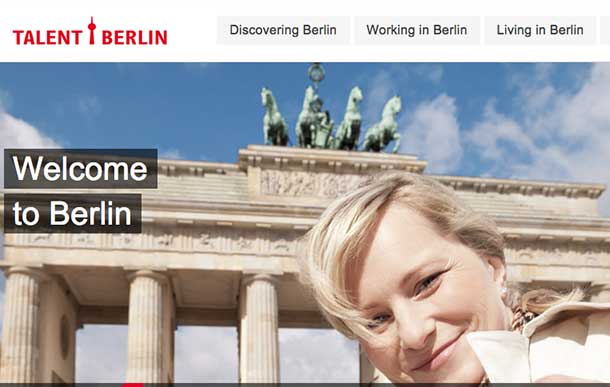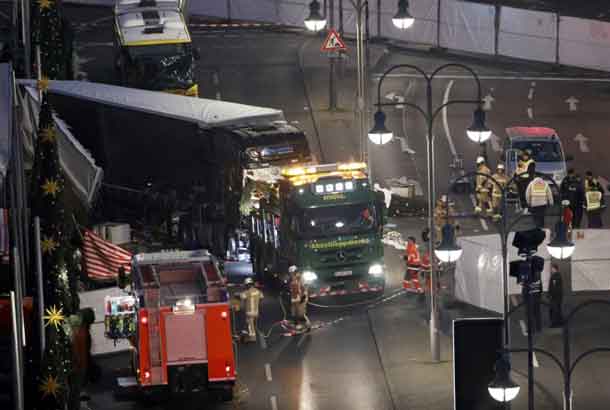

Germany’s collection of regional identities gives travellers a peerless wealth of diverse cultural, historic and culinary options to explore
BERLIN, Germany- Travel – While Germany is not the first location that comes to most people’s minds when they are planning a Euro trip, for travellers who have already been there before it is usually an absolute must to come back.
Germany has been at the heart of Europe for centuries and features some of the richest history and culture you will find anywhere in Europe, as well as stunning scenery, amazing old world and modern architecture, lively festivals, exciting nightlife, delicious cuisine and, of course, the best beer you will ever have in your life.
But what truly makes Germany a first rate travel destination is the amazing cultural variety and distinct identity you will find in its different cities, each one offering travellers a different experiences to suit practically every taste, as well as plenty of natural and man-made beauty to behold. With English widely spoken throughout the country and a fantastic transport infrastructure, getting around in Germany is incredibly easy and efficient.
With that in mind, let’s take a look at five cities that you can visit on your next trip to Germany that are sure to give you a trip to remember.
- Baden Baden
A town located in the outskirts of Germany’s Black Forest, Baden Baden is famous for being the ultimate fashionable spa town for the rich and famous. However, a visit to this fantastic little paradise will convince you that it is truly so much more than that.
Baden Baden was first discovered by the Romans who, upon finding their magnificent thermal springs and majestic vistas of mountains and rivers, decided to create a settlement. By the 1800s, it had become a holiday hangout spot for prominent members of Europe’s aristocracy, such as Victor Hugo, Dostoevsky, Tolstoy, and even Queen Victoria.
Today Baden Baden has come to be known as Europe’s “Summer capital”, and manages to lure thousands of tourists to experience a taste of old world high society, enjoying their therapeutic mineral waters, extravagant hotels, opulent opera houses and concert halls, world famous horse races and, of course, the Versailles palace-inspired Spielbank Casino, one of the world’s oldest casinos.
- Dresden
Thirty miles from the Czech border, the capital city of the free state of Saxony offers visitors a mixture of tradition, scenic beauty and a treasure cove of artistic and architectural riches that no other German city can possibly compete with. Its historic city centre dates back mostly to the 18th century and is divided into two by the River Elbe: Altstadt and its grandiose churches and museums on the south bank, and Neustadt and its stylish boutiques on the north side.
Despite being heavily bombed by the allies during the Second World War, Dresden managed to rise up and fully rebuild itself and many of its most historic buildings, including the Semper Opera House and the Zwinger Palace – renaissance and baroque styled buildings that were a testament to the opulence and florid taste of the former monarchy of Saxony.
Dresden is certainly a city to be walked, as the city centre – often regarded as the ‘Florence of Elbe’ – features a plenty of key sights to visit, beautiful gardens, open air activities and concerts in the parks, and even open air breweries that you will not want to miss.
- Munich
While the first thing that comes to mind for most when they think of Munich is the world famous Oktoberfest beer festival and fair – which attracts an average of six million beer lovers every year – the truth is Munich really comes to life when experienced in depth during quieter times.
Located in the far south of Germany, the capital of the Bavaria can easily rival many European capitals in its splendor and beauty. Named after Benedictine monks who first inhabited the city in the 12th century, Munich has developed to become what the Germans call a “Weltdorf” – or a ‘village of the world’ – filled with strong, diverse cultures and attractions – including more theatres and galleries than anywhere else in Germany.
Munich has plenty to offer tourists including fantastic museums, city palaces, country castles, food markets, and beautiful parks and gardens, including the famous Englischer Garten. Designed by Brit Sir Benjamin Thompson in 1792, the English garden is a world-class urban green space larger than New York’s iconic Central Park, filled with beer gardens, running trails, river surfing and plenty of nude sunbathing.
- Hamburg
The city of Hamburg is routinely rated to be one of the most livable cities in the world, and a quick stroll through the port city’s historic harbor and its cobbled streets will make it undeniable apparent why.
The second largest city in Germany and Europe’s second biggest port, Hamburg’s history stems back to the Roman times where it was considered an Imperial Free City. Located in the banks of the river Elbe, Hamburg has been a vital trading centre since the Middle Ages, where its status as an independent city strengthened their port’s position as Germany’s “Gateway to the World” and brought them countless riches.
Although the city has been destroyed in several occasions, including the “Great Fire” and during the Second World War, a large part of its original architecture has been preserved or reconstructed, giving visitors a chance to marvel at its rich architecture, including the neoclassical City Hall, a 19th century palace that is surely the crowning gem of Hamburg.
Hamburg’s port city status and buzzing nightlife filled with sex, drugs and rock and roll has also made it into a swiftly developing hub that has attracted countless startups, particularly in the naval and aerospace industry, and among publishing and communication companies.
- Berlin
The capital city of Germany is quite simply like no other place on earth.
Populated by one of the most diverse and trendy mix of people and cultures you’ll find anywhere the world, Berlin perfectly combines historical landmarks and buildings – like Bellevue Palace, the historic Brandenburg Gate monument celebrating unity and, of course, the Berlin Wall – alongside modern architectural marvels like the Bundestag, the German parliament boasting a spectacular glass dome, or the Berlin Television Tower at Alexanderplatz.
One of the main not-to-be-missed attractions is the famous Museum Island, a UNESCO World Heritage Site containing a combination of old world and modern museums built between 1824 and 1930: The Atles, Bode, New, Pergamon and the Old National Gallery. Each of these museums features different historic and cultural artifacts and artwork, and contains exhibitions which are truly unmissable – such as the Pergamon Altar and the Ishtar Gate of Babylon.
But what makes Berlin truly unique is a vibrant cultural scene that is unparalleled anywhere else in Europe – and possibly the rest of the world. Inundated with cutting edge trends in lifestyle, music, nightlife and art throughout the entire city, Berlin offers visitors the largest selection of live independent music and theatre in Europe, as well as a collection of cozy pubs, underground bars and surreal, decadent nightclubs that will keep the party going way past sunrise.
© 2017 Distributed by Troy Media
The views, opinions and positions expressed by all columnists and contributors are the author’s alone. They do not inherently or expressly reflect the views, opinions and/or positions of NetNewsLedger.







